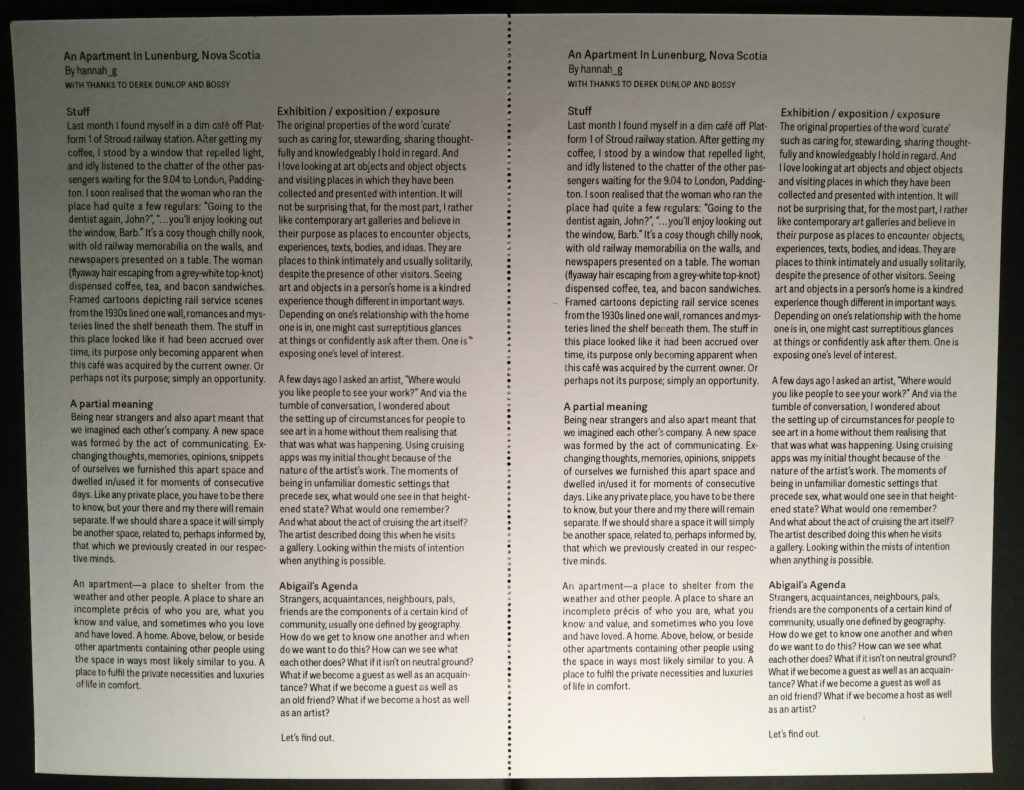By hannah_g
With thanks to Derek Dunlop and Bossy & Jayme Spinks and Helah.
Stuff
Last month I found myself in a dim café off Platform 1 of Stroud railway station. After getting my coffee, I stood by a window that repelled light, and idly listened to the chatter of the other passengers waiting for the 9.04 to London, Paddington. I soon realised that the woman who ran the place had quite a few regulars: “Going to the dentist again, John?”, “… you’ll enjoy looking out the window, Barb.” It’s a cosy though chilly nook, with old railway memorabilia on the walls, and newspapers presented on a table. The woman (flyaway hair escaping from a grey-white topknot) dispensed coffee, tea, and bacon sandwiches. Framed cartoons depicting rail service scenes from the 1930s lined one wall, romances and mysteries lined the shelf beneath them. The stuff in this place looked like it had been accrued over time, its purpose only becoming apparent when this café was acquired by the current owner. Or perhaps not its purpose; simply an opportunity.
A partial meaning
Being near strangers and also apart meant that we imagined each other’s company. A new space was formed by the act of communicating. Exchanging thoughts, memories, opinions, snippets of ourselves we furnished this apart space and dwelled in/used it for moments of consecutive days. Like any private place, you have to be there to know, but your there and my there will remain separate. If we should share a space it will simply be another space, related to, perhaps informed by, that which we previously created in our respective minds.
An apartment- a place to shelter from the weather and other people. A place to share an incomplete praecie of who you are, what you know and value, and sometimes who you love and have loved. A home. Above, below, or beside other apartments containing other people using the space in ways most likely similar to you. A place to fulfil the private necessities and luxuries of life in comfort.
Exhibition / exposition / exposure
The original properties of the word ‘curate’ such as caring for, stewarding, sharing thoughtfully and knowledgeably I hold in regard. And I love looking at art objects and object objects and visiting places in which they have been collected and presented with intention. It will not be surprising that, for the most part, I rather like contemporary art galleries and believe in their purpose as places to encounter objects, experiences, texts, bodies, and ideas. They are places to think intimately and usually solitarily, despite the presence of other visitors. Seeing art and objects in a person’s home is a kindred experience though different in important ways. Depending on one’s relationship with the home one is in, one might cast surreptitious glances at things or confidently ask after them. One is exposing one’s level of interest.
A few days ago I asked an artist, “Where would you like people to see your work?” And via the tumble of conversation, I wondered about the setting up of circumstances for people to see art in a home without them realising that that was what was happening. Using cruising apps was my initial thought because of the nature of the artist’s work. The moments of being in unfamiliar domestic settings that precede sex, what would one see in that heightened state? What would one remember? And what about the act of cruising the art itself? The artist described doing this when he visits a gallery. Looking within the mists of intention when anything is possible.
Abigail’s Agenda
Strangers, acquaintances, neighbours, pals, friends are the components of a certain kind of community, usually one defined by geography. How do we get to know one another and when do we want to do this? How can we see what each other does? What if it isn’t on neutral ground? What if we become a guest as well as an acquaintance? What if we become a guest as well as an old friend? What if we become a host as well as an artist?
Let’s find out.
